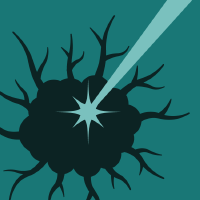Topic Menu
► Topic MenuTopic Editors


Novel Approaches in Bladder Cancer Treatment
Topic Information
Dear Colleagues,
Bladder cancer is the ninth most common malignant ailment and the fourteenth most common cause of cancer death worldwide. Over the past decades, novel and potent agents have been developed and approved. However, although innovative approaches, such as targeted therapy and/or immunotherapy, have provided benefits for tumor patients, many challenges, such as low response rate and drug resistance, remain overt. Extensive research is required to refine and optimize the current bladder cancer treatment protocols. Dissatisfaction with the conventional treatment has meanwhile driven many cancer patients to seek “non-conventional” care options, including natural products, mind and body practices, or other non-conventional health approaches. From the scientists’ side, innovative and “risky” projects are under investigation focusing on cancer stem cell targeting, selective photodynamic technology, or anticancer vaccine therapy, among others. The purpose of this Special Issue is to collect original research articles and reviews on non-conventional medicine for bladder cancer. Both clinical trials and preclinical studies (in vitro and in vivo) are welcome that do not reflect the mainstream of cancer treatment but which are rather original and may open the mind for unconventional strategies.
Prof. Dr. Roman Blaheta
Prof. Dr. Beatrice E. Bachmeier
Topic Editors
Keywords
- bladder cancer
- non-mainstream treatment
- complementary medicine
- plant compounds
- stem cell targeting
- anticancer vaccination
- photodynamic therapy
Participating Journals
| Journal Name | Impact Factor | CiteScore | Launched Year | First Decision (median) | APC |
|---|---|---|---|---|---|

Biomolecules
|
4.8 | 9.4 | 2011 | 16.3 Days | CHF 2700 |

Cancers
|
4.5 | 8.0 | 2009 | 16.3 Days | CHF 2900 |

Current Oncology
|
2.8 | 3.3 | 1994 | 17.6 Days | CHF 2200 |

International Journal of Molecular Sciences
|
4.9 | 8.1 | 2000 | 18.1 Days | CHF 2900 |

Onco
|
- | - | 2021 | 19 Days | CHF 1000 |

MDPI Topics is cooperating with Preprints.org and has built a direct connection between MDPI journals and Preprints.org. Authors are encouraged to enjoy the benefits by posting a preprint at Preprints.org prior to publication:
- Immediately share your ideas ahead of publication and establish your research priority;
- Protect your idea from being stolen with this time-stamped preprint article;
- Enhance the exposure and impact of your research;
- Receive feedback from your peers in advance;
- Have it indexed in Web of Science (Preprint Citation Index), Google Scholar, Crossref, SHARE, PrePubMed, Scilit and Europe PMC.

